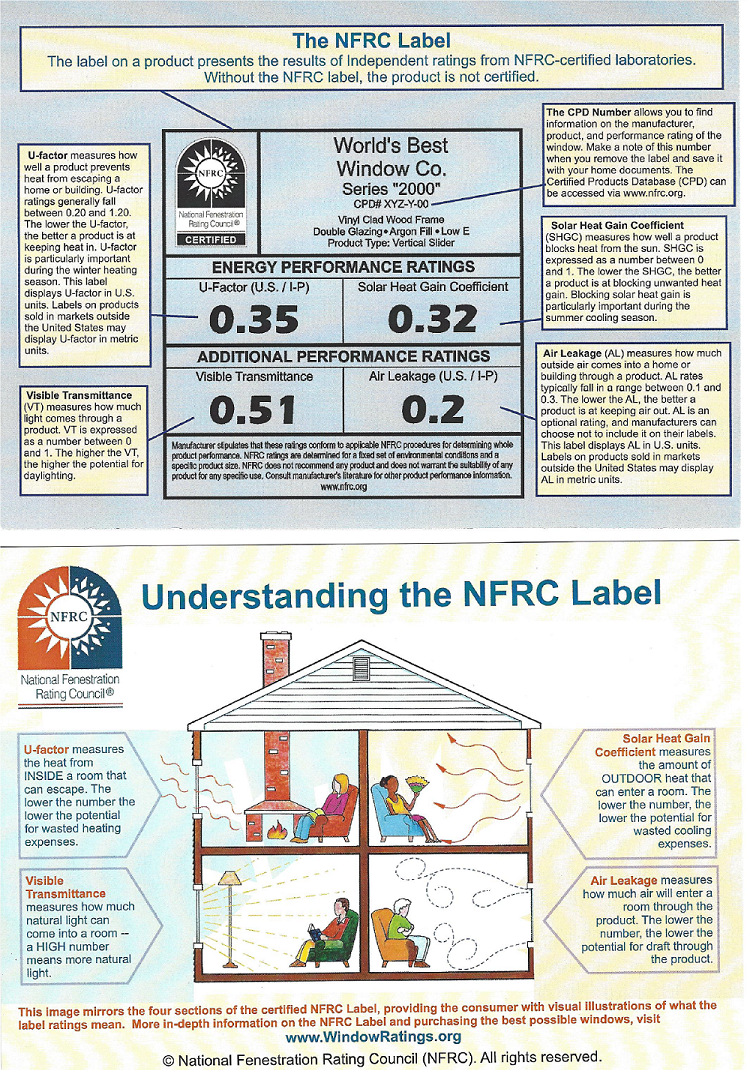The average consumer may know whether or not they like the look of a particular window, but it’s impossible to tell whether a window offers the kind of quality your home needs just by the way it looks.
The specifications of a window may seem like minor details, but they’re incredibly important. If you settle for a bargain window without checking out its technical information, such as its NFRC rating, you might end up with a window that offers poor insulation, is prone to drafts and does a poor job of letting natural light filter into your home.
Infinity® from Marvin prides itself on making the highest quality windows on the market, but you don’t have to take the manufacturer’s word for it. When you’re looking for replacement windows for your home, always ask to see the NFRC label.
What Is an NFRC Rating?
NFRC Ratings are given by the National Fenestration Rating Council, a non-profit organization that has established standardized performance ratings to help consumers compare windows and doors with one another. This organization’s ratings provide detailed information related to the energy performance of these products, helping consumers make informed decisions when making major purchases.
Every reputable window manufacturer receives NFRC ratings for all of their products. Windows are evaluated according to four key criteria:
- U-Factor measures the window’s ability to keep indoor heat from escaping outside.
- Solar Heat Gain Coefficient measures how well a product resists solar heat from entering a home, an important consideration when homes are trying to stay cool in summer.
- Visible Transmittance evaluates the window’s ability to let natural light enter the home. Better visible transmittance means better natural indoor lighting, reducing your dependency on artificial lights.
- Air Leakage gauges the amount of air flow that will enter the home through the window. Loose window seals increase the likelihood of drafts.
With these ratings, consumers can easily compare windows to determine which options best fit their needs, as well as which windows offer the best value for the price.

Why Are Ratings Important?
As is the case with many consumer products, average shoppers aren’t able to identify small differences in the quality and/or build of a product. In some cases, proper evaluation requires specialized equipment, as well as in-depth knowledge about the product’s construction.
But consumers put themselves at risk when they trust the manufacturer to be transparent about this information. That’s why it’s essential that the NFRC ratings come from an independent non-profit that maintains no relationship with existing window manufacturers. Having an independent rating system provides critical consumer protection for a costly consumer product. Replacing the windows in your home is no small expense, and no one can afford to get short-changed by overpaying for poor quality windows. With NFRC ratings, you don’t have to worry about what you’re getting—you’ll know exactly what you’re paying for.
How to Read the NFRC Label
To understand the information featured on the NFRC rating, you need to know how each criterion is scored.
According to the NFRC, the lower the U-Factor number, the better: Good windows will feature a score between 0.20 and 1.20. A lower score is also preferred for the Solar Heat Gain Coefficient, which is recommended to rate between zero and one.
Better Air Leakage windows will also feature a lower score, ideally between 0.1 and 0.3. But for Visible Transmittance, you want as high a number as possible to reflect the amount of light entering the home.
Once you know how to read NFRC labels, you can walk into any window store, compare any number of products and know exactly what you’re getting with each one. Now that you know how to tell a good window from a lemon contact North Georgia Replacement Windows today to start the process of upgrading your home with high-quality Infinity from Marvin Replacement Windows and Doors.




